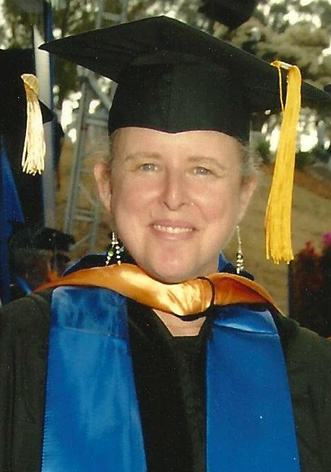
Ella Belzberg
Twelve years after being part of the team that designed the interface of the Visual History Archive, Ella Belzberg has made a detailed examination of the process her dissertation at the UC Santa Barbara Gevirtz Graduate School of Education.
Belzberg, who received her doctorate of philosophy in education from UCSB in December 2013, titled her dissertation Both Sides of the Interface: Building an Education Interface for a Digital Video Archive with an Interprofessional Group. Research for the project began in 1999, when she was first introduced to the Shoah Foundation’s chief technology officer Sam Gustman. Gustman was beginning the Foundation’s distribution phase and exploring the design of the interface to its digital video archive, the Visual History Archive. Gustman had a unique approach to building the interface, Belzberg said – since teachers, students and researchers would be using the interface, Gustman felt that they should also be involved in the design process.
Belzberg was hired as the Technology Department liaison to both the Super Broadband Network community as well as to the education community. Her responsibility was to assist in the design of the Research Interface from an education perspective; to do so, she brought in Teacher Leaders from the National Writing Project and education researchers from UCSB Gevirtz Graduate School of Education, as well as from The Santa Barbara Classroom Discourse Group.
With the Foundation’s Technology Department, over the course of the following two years, the three groups – teacher-leaders; education researchers; and the technology department (which also included cataloguers, programmers, an interface designer, and Belzberg) conducted ‘The Online Inquiry Working Group’ series to create the Visual History Archive interface.
“I was fascinated by how these three groups came together in an interprofessional way and the work which we needed to do in order to support and sustain the groups’ interaction,” Belzberg said.
In the dissertation, Belzberg documents the two-year collaboration of the Online Inquiry Working Group series to examine “how an organization develops a collaborative interprofessional group to build a public, educational research interface for a large video collection, and in what ways this group influences the design process.”
Belzberg said that while it may seem obvious to bring teachers and education researchers into the design process of educational products, it’s actually not commonly done.
“Millions of dollars are spent on educational products without the inclusion of teachers in the process. Unfortunately, many times this results in educational products sitting on school shelves rather than being incorporated into the classroom,” she said. “Ideally, the work we did at the Shoah Foundation is a positive example of how working with teachers early in the design process can result in a more usable product.”
Belzberg praised the staff of the Shoah Foundation who realized founder Steven Spielberg’s vision, and Gustman’s leadership in building an archival system that had never been built before.
“Gustman did so by structuring the archival system with the greatest flexibility possible in order to support the inquiry process of researchers, teachers and students for generations to come,” Belzberg said. “Working with Sam Gustman was a privilege and an honor.”
Currently Belzberg is working to connect classrooms in different cities and countries to each other and to scarce resources such as scanning electron microscopes. She is also leading a team that connects students of all ages who are outside the formal education system into learning environments in unique ways.